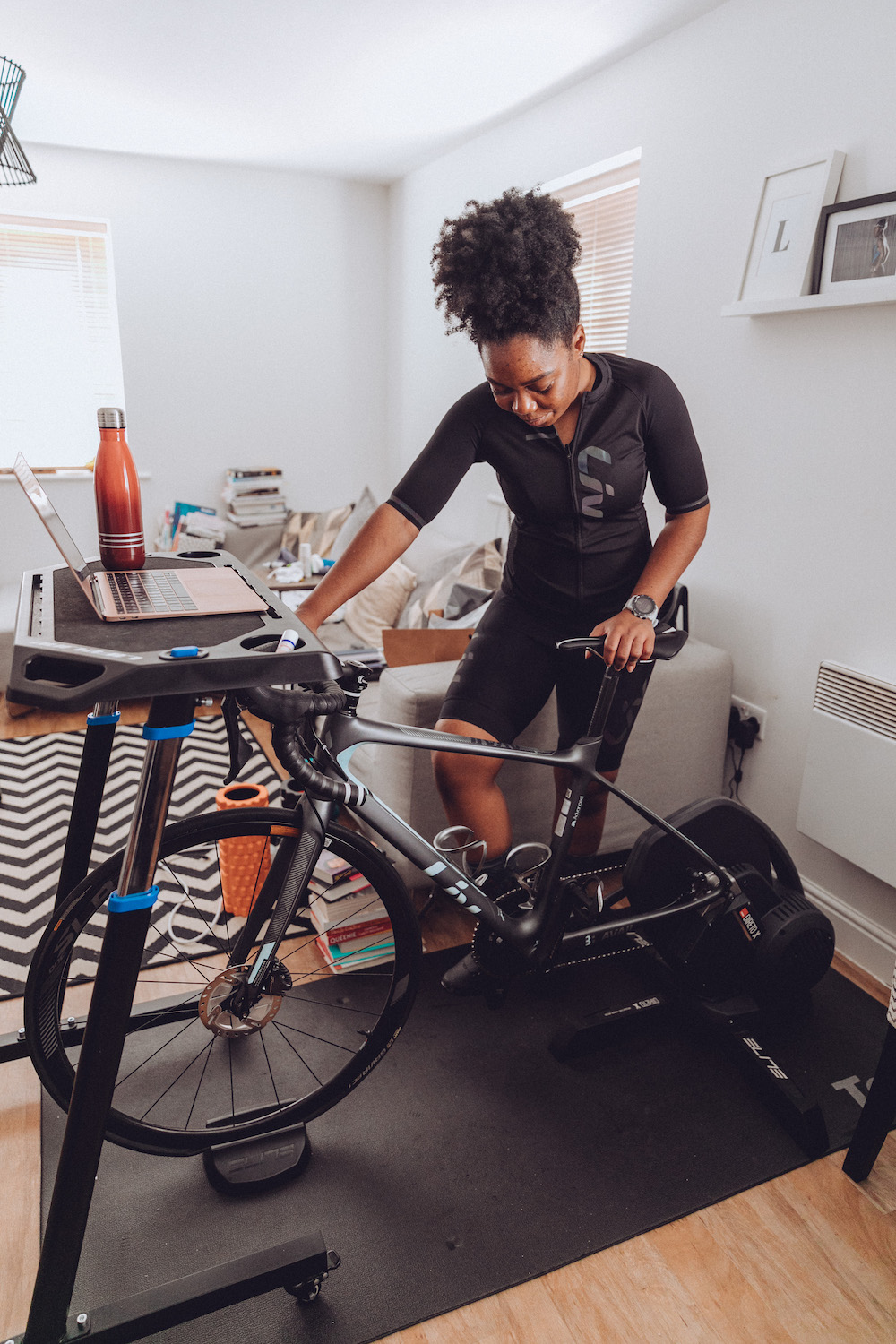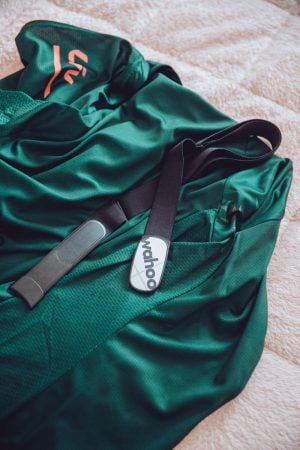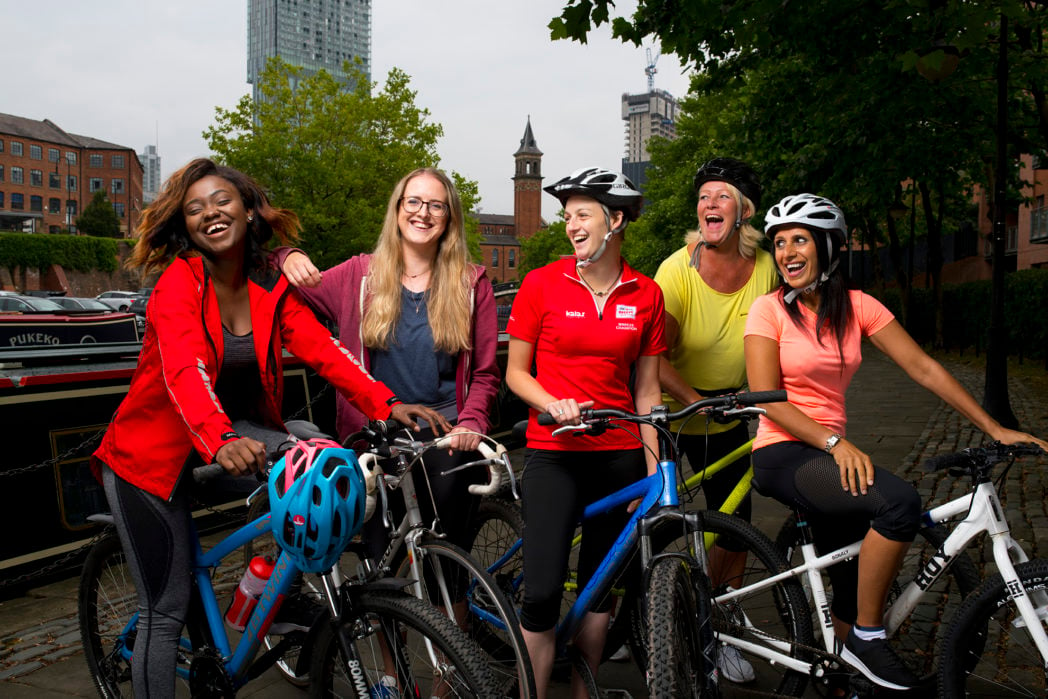
Since signing up to Zwift and riding on the platform more consistently, it’s been fun to have more and more women in my community join in. As not all are road cyclists, not everyone has a smart trainer, so we’ve had to look into options for getting stationary bikes set up and ready to Zwift. I spoke to a few friends and did some research to find the best speed and cadence sensors for Zwift, so you can get in on the action!
If you have a basic indoor trainer you might want to make the most of what you already have to try out Zwift before you invest in a more expensive set up. You’ll just need a device to run Zwift on (e.g laptop, ipad or apple TV) and these speed and cadence sensors.
What Are Speed & Cadence Sensors?
Speed and cadence sensors are commonly used in cycling (indoor cycling and outdoors) to provide real-time data on peed and pedalling cadence.
A speed sensor measures how fast the bike is “moving”. It typically attaches to the wheel hub or the spokes and uses magnets and a sensor to detect each revolution of the wheel. By calculating the time it takes for each revolution, it can accurately determine the speed of the bike.
For more accurate cadence data, you might also choose to add a cadence sensor to your wheel-on smart trainer, such as the KICKR Core. A cadence sensor measures the rate of your pedal strokes.
It usually attaches to crank arm of your bike or pedal and uses magnets and a sensor to detect each pedal revolution. Cadence is measured in revolutions per minute (RPM), indicating how many times the pedals complete a full rotation in a minute.
And it should be noted that, whereas the speed sensor is critical, the cadence you can do without for Zwift.
What Is Zwift?
Zwift is basically a cycling performance and running training app. You can ride on your own or with others – friends or strangers – interacting, training and competing in a virtual world. If you wanna find out more about Zwift, read my tips to get you started here.
To play, you need to link your turbo trainer / bike to your computer. This then lets you ride with other cyclists in the virtual worlds. You can also connect with a tablet, smart phone or Apple TV.
If you don’t have a smart turbo trainer, you need to attach speed and cadence sensors on your indoor bike or basic / dumb trainer so you can connect to the app, allowing it to measure your efforts and give you live speed data as you ride.
Wahoo Speed & Cadence Sensors
If you are looking to get some wireless sensors, the Wahoo Speed & Cadence Sensors are what I’ve been recommending. You used to be able to buy them as a bundle but they’ve switched the speed sensor to the TRACKR speed so now you have to buy separately.
These speed & cadence devices connect to your phone via Bluetooth wireless technology (4.0).
As the sensors connect to any cycling apps (like Sufferfest, RGT, Strava etc), it becomes easy to monitor your cycling progress whatever training program you choose.
The Wahoo sensors have both Bluetooth and ANT+ connectivity. While Bluetooth technology allows you to connect to one device at a time, the ANT+ will allow you to connect multiple compatible devices. However, Bluetooth is preferred as it’s more stable.
If you also have an outdoor bike, the sensors are waterproof and portable meaning you can easily switch between the indoor and outdoor bikes. They typically connect to your bike using rubber bands. If you use the same bike indoors and outdoors – even better.
More Recommendations
- Wahoo Blue SC Speed and Cadence Sensor (both in one device)
- Garmin speed and cadence sensors
- moofit speed and cadence sensors
- Magene S3+ Speed/Cadence Sensor
Although, someone said “I second wahoo. Had terrible connection issues with the Garmin one for some reason. Swapped to wahoo and connects every time”
Are Speed And Cadence Sensors Worth It?
If you wanna use Zwift or other compatible training apps without a smart trainer you’re going to need a speed sensor at the very least. I’ve personally loved Zwift for casual group rides, as well as structured training.
You can even use your new sensors with a bike computer (e.g a compatible Garmin device) or an app like Wahoo app / Wahoo fitness to do workouts on the bike indoors, without the need for Zwift. There are plenty of benefits to cycling indoors where having speed and cadence sensors can help you to get better results.
Power Meter vs Speed & Cadence Sensors
Depending on your budget, you may choose to install a power meter on your bike instead. This is more relevant if you’re using a basic trainer with a regular bike because Zwift calculates game play based on power so with speed and cadence sensors, power is being estimated.
If you want to get into racing on Zwift, you’ll need to have a smart trainer or power meter. You’ll also need to get yourself a heart rate monitor – I’m currently using the Wahoo TRACKR Heart Rate Monitor.
Whichever bike sensor brand you go for (or not) though, what is important is that they are compatible with the device you are trying to pair them with. As some are ANT+ only so they will not connect to a Bluetooth device (or vice versa).
Happy Zwifting!
Elle






